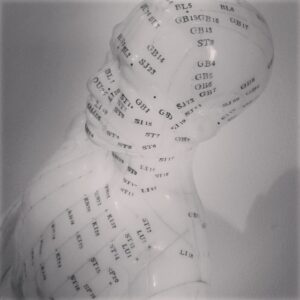


Acupuncture and Purinergic Signalling
Acupuncture and purinergic signalling was the key focus of a lecture given by Mel Hopper Kopperman at the British Acupuncture Council conference in 2019. She posited this as one explanation (stressing that it was not the only one) of how acupuncture works from a biochemistry perspective. This is a brief summary of the lecture together with some further information.

Acupuncture and purinergic signalling an explanation of how one method of treatment can have a wide range of potential benefits
Following the discovery of neurons and then neurotransmitters in the late nineteenth and mid-twentieth century, in the nineteen-nineties, pioneering work by Geoffrey Burnstock was finally accepted as showing that purinergic signalling is how different neurons communicate with each other, involving the key nucleoside adenosine and the compound adenosine triphosphate (ATP).
Both these substances are purines, and very unusually they are present in all bodily tissues and body systems. Until now, I had only understood the role ATP plays in skeletal muscle activity, but it in fact functions as a co-transmitter for all nerves – even though most organic transmitters are anatomically segregated – so this tells us that we are talking about a very important pathway in the human body.
In 2009, Burnstock himself was the lead author on a paper that investigated acupuncture and purinergic signalling. There are various ways in which fibroblasts (a bit like repair cells widely distributed in connective tissue) can be stimulated to produce ATP, and poking and stretching as by an acupuncture needle are two of these ways. Via purinergic signalling, this rise in ATP can send signals to the central nervous system, the brain stem where autonomic functions are controlled, and then on to the cortex where pain perception can be modified. This was held up as a way to possibly explain how acupuncture can have such a wide range of possible benefits.
Goldman et al tested this on mice in 2010 (Nature Neuroscience May 2010) and found that adenosine levels could be raised by as much as 24 times with acupuncture. After acupuncture, ATP levels returned to baseline, but adenosine remained elevated. In 2012, they replicated this on humans using acupuncture on one of the most commonly-used points, Zu San Li or Stomach 36 on the leg below the knee. They found the same results with elevated adenosine. However, insertion of an acupuncture needle into a non-acupuncture location control point did not bring about elevation of adenosine. The researchers concluded that acupuncture is essential to the biomechanism of acupuncture.
As mentioned, adenosine plays a significant role in all body tissues and in all bodily systems. It is not surprising, therefore, that there is much current research looking at ways it can be utilised in the treatment of conditions such as cardiac, digestive, and immuno-regulation. Given this wide scope of potential medical uses, acupuncture and purinergic signalling does indeed seem to offer one biochemical model of how acupuncture works on a wide range of conditions.
Click here for more news and information from London Acupuncture Therapy.


